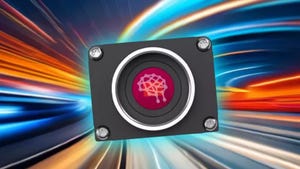December 21, 2010

Drylubricants can give design engineers and manufacturers a solution to thefamiliar design and production challenge of stacked tolerances. Tolerancesrefer to the permissible limit or limits of variation in a physical dimension,and are specified by the design engineer to allow reasonable leeway forimperfections and inherent variability - without compromising performance ofthe finished assembly or process.
Thischallenge of stacked tolerances becomes an issue for design engineers whenworking with mechanical assemblies that have multiple components and movingparts that work in unison. One solution that could be used to address stackedtolerances is to design everything with tighter tolerances, thus ensuringhigher levels of precision. This option is not usually the most appropriate forthe design engineer and manufacturer because of the high cost associated withit. This is especially true if the finished assembly has a limited service lifeexpectancy. Higher precision equals higher cost because more frequentinspections and maintenance of the tooling and machines during manufacturingare necessary to obtain high levels of precision.
Overcoming Stacked Tolerances with Dry Lubricants_B |
Amore cost-effective solution to address stacked tolerances is the use of a drylubricant as a surface treatment. Dry lubricants using PTFE technology providea thin, smooth coating over the finished device or mechanical assembly toreduce friction caused by stacked tolerances. This ensures device functionalityand performance; in fact, dry lubricants can reduce the force needed to actuatea device or assembly by 25 to 30 percent.
Acommon example of a portable medical device found exclusively in the operatingroom that benefits from dry lubricant coating is the surgical stapler. Astapler is essentially a mechanical assembly that requires trigger activationto actuate the stapling action. The motion of springs and metal stamped partssliding against each other is a process that requires the engineer to designwith precision and allotted tolerances. In high-volume production, the use ofdry lubricant can keep those precision costs down while ensuring deviceperformance.
Manufacturingvolumes and surface geometries influence what application method to choose fordry lubricant use. The various methods of application include: dipping, wipingor brushing, air spraying, air-less spraying, aerosol sprays, drying, andmelt-coating for improved adhesion and durability. The most common method usedis dip-coating because it offers the most consistency from part to part.
DryLubricant Selection Issues
Drylubricant fluids are non-flammable and have a high degree of materialscompatibility, permitting use on nearly all types of metals and most plasticsincluding polycarbonates. Despite their wide applicability, when choosing a drylubricant, design engineers must take many variables into consideration.Consistency and quality of the coating is an extremely important variablebecause it can affect how well the lubricant will perform. To address this,design engineers must pay attention to the calibration of the fluid. In otherwords, the ratio of PTFE particles to carrier fluid should remain at consistentlevels throughout the coating process. This can also be impacted by theevaporation of the carrier fluid.
Overcoming Stacked Tolerances with Dry Lubricants_A |
Anotherchallenge to maintaining calibration is the "hang time" of the PTFE particleswithin the carrier fluid. It is common for the PTFE particles to sink in thecarrier fluid to the bottom of the vessel, thus affecting calibration andconsistency of the coating. When the part or device is dipped into the fluid,it may end up with a streaky and inconsistent coating. If manufacturers work toconstantly agitate the fluid, this can help to maintain calibration. However,constant agitation requires a lot of extra work on the production floor andalso can promote evaporation of the carrier fluid. By choosing a dry lubricantvendor that provides a ready-to-use, pre-mixed and calibrated formula that hasa high "hang time" and maintains the ratio of carrier fluid to PTFE particles,design engineers can be assured that they will achieve a more consistentcoating and smoother end-use actuation.
Anotherconsideration for design engineers when choosing a dry lubricant are theenvironmental and safety qualities of the coating. Some vendors offer productsthat have better environmental properties, meeting strict EnvironmentalProtection Agency (EPA) regulations. For example, the MicroCare DuraGlide has an EPAdesignated Volatile Organic Compound (VOC) exempt status and also has an OzoneDepletion Potential (ODP) of zero.
Jay Tourigny is vice president of operationsat MicroCare Medical. Click herefor more information.
About the Author(s)
You May Also Like







